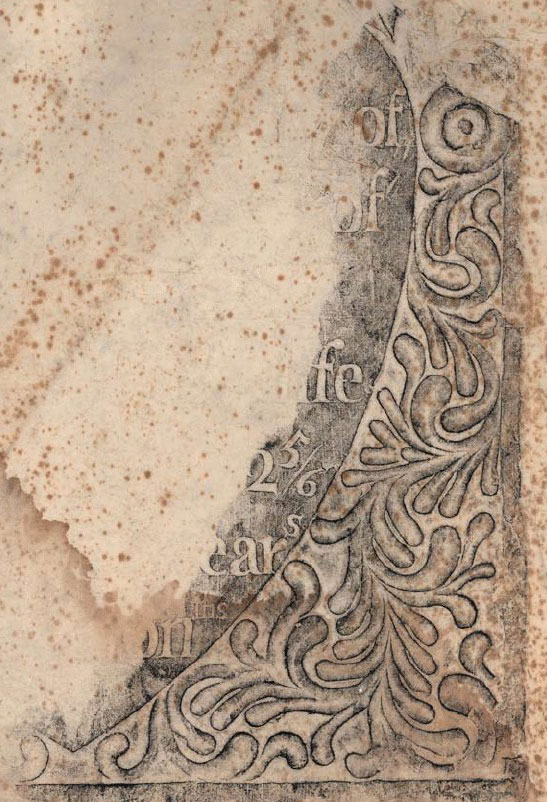- Relief printing
- Intaglio and planographic printing
- Color printing
- Bits and pieces
- Early photography in silver
- Non-silver processes
- Modern photography
- Color notes
- Color photography
- Photography in ink: relief and intaglio printing
- Photography in ink: planographic printing
- Digital processes
- Where do we go from here?
Rubbings

Rubbing. John Stevens. Decorative tombstone border carved in slate. c. 1715. 17 1/2 x 11 1/4" (44.5 x 28.6 cm). Printed by John Howard Benson. c. 1940. The Museum of Modern Art, New York. Gift of Richard Benson.
The most basic pictorial analog is the rubbing. Since I come from a stone-carving family I can’t resist illustrating one made from an early American tombstone. The letters and floral border are beautifully described, and the picture has that marvelous characteristic of only showing part of the original, like some Greek sculptural fragment where the arms and head tantalize us with their absence. This sheet also has a great patina of brown spots running across the surface and there is even a large water stain on the bottom edge. All in all it makes a great picture, and does so by transmitting information from the original carved stone into a new context: the meaningless degradation of the paper support. The artists among us should always be cautious about letting such beautiful haphazard patterns coexist with intended meaning.
Rubbings are extremely easy to make. This one was done by holding a soft sheet of paper against the vertical stone and then rubbing the paper surface with a block of black cobbler’s wax called “heel ball.” Multiple rubbings aren’t too good for the object underneath, but if the work is done with soft ink-bearing pads, virtually no harm is done to the original. A few artists use rubbing as their medium, laying down different colors with different pressures to make rich renditions that owe as much of their content to manual skill as to the mechanical transmission of information from one form to another.

